A Study of the Mechanisms and Characteristics of Fluorescence Enhancement for the Detection of Formononetin and Ononin
Abstract
1. Introduction
2. Results
2.1. Adsorption and Fluorescence Spectra of F Aqueous Solution
2.2. Fluorescence and Adsorption Spectrum of FG and Its Cleavage Product
2.3. Effect of Heating Temperature on Fluorescence of FG
2.4. Effect of Solvent on Fluorescence of F
2.5. The Stability of Fluorescence
2.6. Fluorescence Quantum Yield
2.7. Relationship between Concentration and Fluorescence Intensity
3. Materials and Methods
3.1. Materials
3.2. Apparatus
3.3. General Procedure for Spectral Measurement
3.4. Measurement of Fluorescence Quantum Yield
4. Conclusions and Outlook
Supplementary Materials
Author Contributions
Funding
Institutional Review Board Statement
Informed Consent Statement
Data Availability Statement
Conflicts of Interest
References
- Al-Maharik, N. Isolation of naturally occurring novel isoflavonoids: An update. Nat. Prod. Rep. 2019, 36, 1156–1195. [Google Scholar] [CrossRef] [PubMed]
- Ngadni, M.A.; Akhtar, M.T.; Ismail, I.S.; Norazhar, A.I.; Shaari, K. Clitorienolactones and isoflavonoids of Clitorea ternatea roots alleviate stress-like symptoms in a reserpine-induced zebrafish model. Molecules 2021, 26, 4137. [Google Scholar] [CrossRef] [PubMed]
- Liu, X.H.; Xue, Z.Y.; Wang, B.; Wang, Y.; Zhang, M.T.; Feng, S.L. Comparative stomach tissue distribution profiles of four major bio-active components of Radix Astragali in normal and gastric ulcer mice. Braz. J. Pharm. Sci. 2022, 58, e18524. [Google Scholar] [CrossRef]
- Sun, L.L.; Yang, Z.G.; Zhao, W.; Chen, Q.; Bai, H.Y.; Wang, S.S.; Yang, L.; Bi, C.M.; Shi, Y.B.; Liu, Y.Q. Integrated lipidomics, transcriptomics and network pharmacology analysis to reveal the mechanisms of Danggui Buxue Decoction in the treatment of diabetic nephropathy in type 2 diabetes mellitus. J. Ethnopharmacol. 2022, 283, 114699. [Google Scholar] [CrossRef]
- Malca-Garcia, G.R.; Zagal, D.; Graham, J.; Nikolić, D.; Friesen, J.B.; Lankin, D.C.; Chen, S.N.; Pauli, G.F. Dynamics of the isoflavone metabolome of traditional preparations of Trifolium pratense L. J. Ethnopharmacol. 2019, 238, 111865. [Google Scholar] [CrossRef] [PubMed]
- Hou, W.; Li, S.; Li, S.; Shi, D.; Liu, C. Screening and isolation of cyclooxygenase-2 inhibitors from Trifolium pratense L. via ultrafiltration, enzyme-immobilized magnetic beads, semi-preparative highperformance liquid chromatography and high-speed counter-current chromatography. J. Sep. Sci. 2019, 42, 1133–1143. [Google Scholar] [CrossRef] [PubMed]
- Wang, W.-S.; Zhao, S.C. Formononetin exhibits anticancer activity in gastric carcinomacell and regulating miR-542-5p. Kaohsiung J. Med. Sci. 2021, 37, 215–222. [Google Scholar] [CrossRef]
- Yang, B.; Yang, N.; Chen, Y.P.; Zhu, M.M.; Lian, Y.P.; Xiong, Z.W.; Wang, B.; Feng, L.; Jia, X.B. An Integrated Strategy for Effective-Component Discovery of Astragali Radix in the Treatment of Lung Cancer. Front. Pharmacol. 2021, 11, 580978. [Google Scholar] [CrossRef]
- Gong, G.W.; Zheng, Y.Z.; Kong, X.P.; Wen, Z. Anti-angiogenesis Function of Ononin via Suppressing the MEK/Erk Signaling Pathway. J. Nat. Prod. 2021, 84, 1755–1762. [Google Scholar] [CrossRef]
- Chung, I.-M.; Lim, J.-J.; Ahn, M.-S.; Jeong, H.-N.; An, T.-J.; Kim, S.-H. Comparative phenolic compound profiles and antioxidative activity of the fruit, leaves, and roots of Korean ginseng (Panax ginseng Meyer) according to cultivation years. J. Ginseng Res. 2016, 40, 68–75. [Google Scholar] [CrossRef]
- Luo, L.; Zhou, J.; Zhao, H.; Fan, M.; Gao, W. The anti-infammatory efects of formononetin and ononin on lipopolysaccharide-induced zebrafsh models based on lipidomics and targeted transcriptomics. Metabolomics 2019, 15, 153. [Google Scholar] [CrossRef] [PubMed]
- Yu, L.; Zhang, Y.Y.; Chen, Q.Q.; He, Y.; Zhou, H.F.; Wan, H.T.; Yang, J.H. Formononetin protects against inflammation associated with cerebral ischemia-reperfusion injury in rats by targeting the JAK2/STAT3 signaling pathway. Biomed. Pharmacother. 2022, 149, 112836. [Google Scholar] [CrossRef] [PubMed]
- Geng, L.-M.; Jiang, J.-G. The neuroprotective effects of formononetin: Signaling pathways and molecular targets. J. Funct. Foods 2022, 88, 104911. [Google Scholar] [CrossRef]
- Ma, C.; Xia, R.; Yang, S.; Liu, L.; Zhang, J.; Feng, K.; Shang, Y.; Qu, J.; Li, L.; Chen, N.; et al. Formononetin attenuates atherosclerosis via regulating interaction between KLF4 and SRA in apoE (-/-) mice. Theranostics 2020, 10, 1090–1106. [Google Scholar] [CrossRef] [PubMed]
- Naudhani, M.; Thakur, K.; Ni, Z.-J.; Zhang, J.G.; Wei, Z.-J. Formononetin reshapes the gut microbiota, prevents progression of obesity and improves host metabolism. Food Funct. 2021, 12, 12303–12324. [Google Scholar] [CrossRef]
- Siddiqui, M.-T.; Siddiqi, M. Hypolipidemic principles of Cicer arietinum: Biochanin-A and formononetin. Lipids 1976, 11, 243–246. [Google Scholar] [CrossRef]
- Sun, J.; Jiang, Z.; Yan, R.Q.; Olaleye, O.; Zhang, X.L.; Chai, X.; Wang, Y.F. Quality evaluation of astragali radix products by quantitative analysis of multi-components by single marker. Chin. Herb. Medi. 2013, 5, 272–279. [Google Scholar] [CrossRef]
- Lasic, K.; Mornar, A.; Nigovic, B. Quality by design (QbD) approach for the development of a rapid UHPLC method for simultaneous determination of aglycone and glycoside forms of isoflavones in dietary supplements. Anal. Methods. 2020, 12, 2082–2092. [Google Scholar] [CrossRef]
- Lv, Y.-W.; Hu, W.; Wang, Y.-L.; Huang, L.-F.; He, Y.-B.; Xie, X.-Z. Identification and determination of flavonoids in astragali radix by high performance liquid chromatography coupled with DAD and ESI-MS detection. Molecules 2011, 16, 2293–2303. [Google Scholar] [CrossRef]
- Zhang, P.; Ma, H.; Lin, X.; Qiu, F. Simultaneous quantification and rat pharmacokinetics of formononetin-7-O-β-d-glucoside and its metabolite formononetin by high-performance liquid chromatography–tandem mass spectrometry. J. Sep. Sci. 2020, 43, 2996–3005. [Google Scholar] [CrossRef]
- Rijke, E.; Joshi, H.; Sanderse, H.R.; Ariese, F.; Brinkman, U.; Gooijer, C. Natively fluorescent isoflavones exhibiting anomalous Stokes’ shifts. Anal. Chim. Acta 2002, 468, 3–11. [Google Scholar] [CrossRef]
- Li, W.-H.; Sun, C.-M.; Wei, Y.-J. Fluorescence enhancement of flavoxate hydrochloride in alkali solution and its application in pharmaceutical analysis. Acta Pharm. Sin. B 2015, 50, 1324–1329. [Google Scholar]
- Li, W.-H.; Cao, J.-J.; Lu, R.; Wei, Y.-J. Study on Fluorescence Properties of Flavanone and Its Hydroxyl Derivatives. Spectrosc. Spec. Anal. 2016, 36, 1007–1012. [Google Scholar] [CrossRef]
- Li, W.-H.; Wang, D.-Y.; Cao, J.-J.; Wei, Y.-J. Comparative Study of Absorption and Fluorescence Spectra of Glycitein and Glycitin. Chem. J. Chin. Univ.-Chin. 2019, 40, 47–54. [Google Scholar] [CrossRef]
- Cao, J.-J.; Sun, Q.-R.; Li, W.-H.; Song, R.-R.; Cao, Q.-Y.; Wang, K.; Wei, Y.-J. Fluorescence Properties of Magnoflorine and Its Application in Analysis of Traditional Chinese Medicine. Chin. J. Anal. Chem. 2019, 47, 165. [Google Scholar] [CrossRef]
- Cao, J.J.; Zheng, Y.H.; Liu, T.; Liu, J.M.; Liu, J.Z.; Wang, J.; Sun, Q.R.; Li, W.H.; Wei, Y.J. Fluorescence, absorption, chromatography and structural transformation of chelerythrine and ethoxychelerythrine in protic solvents: A comparative study. Molecules 2022, 27, 4693. [Google Scholar] [CrossRef]
- Li, L.-R.; Liu, C.-G.; Wei, Y.-J. Fluorescence Spectra and Absorption Spectra of Carvacrol. Spectrosc. Spec. Anal. 2011, 31, 2763. [Google Scholar] [CrossRef]
- Wei, Y.-J.; Li, N.; Qin, S.-J. Fluorescence spectra and fluorescence quantum yield of sulfosalicylic acid. Spectrosc. Spec. Anal. 2004, 24, 647–651. [Google Scholar] [CrossRef]
- Varga, M.; Bátori, S.; Kövári-Rádkai, M.; Prohászka-Német, I.; Vitányi-Morvai, M.; Böcskey, Z.; Bokotey, S.; Simon, K.; Hermecz, I. Stability and Chemical Reactivity of 7-Isopropoxyisoflavone (Ipriflavone). Eur. J. Org.Chem. 2001, 2001, 3911–3920. [Google Scholar] [CrossRef]
- Zhang, X.-Y. Fluorescence Properties and Analytical Methods of Several Isoflavonoids. Master’s Dissertation, Hebei Normal University, Shijiazhuang, China, 2018; pp. 12–15. [Google Scholar]

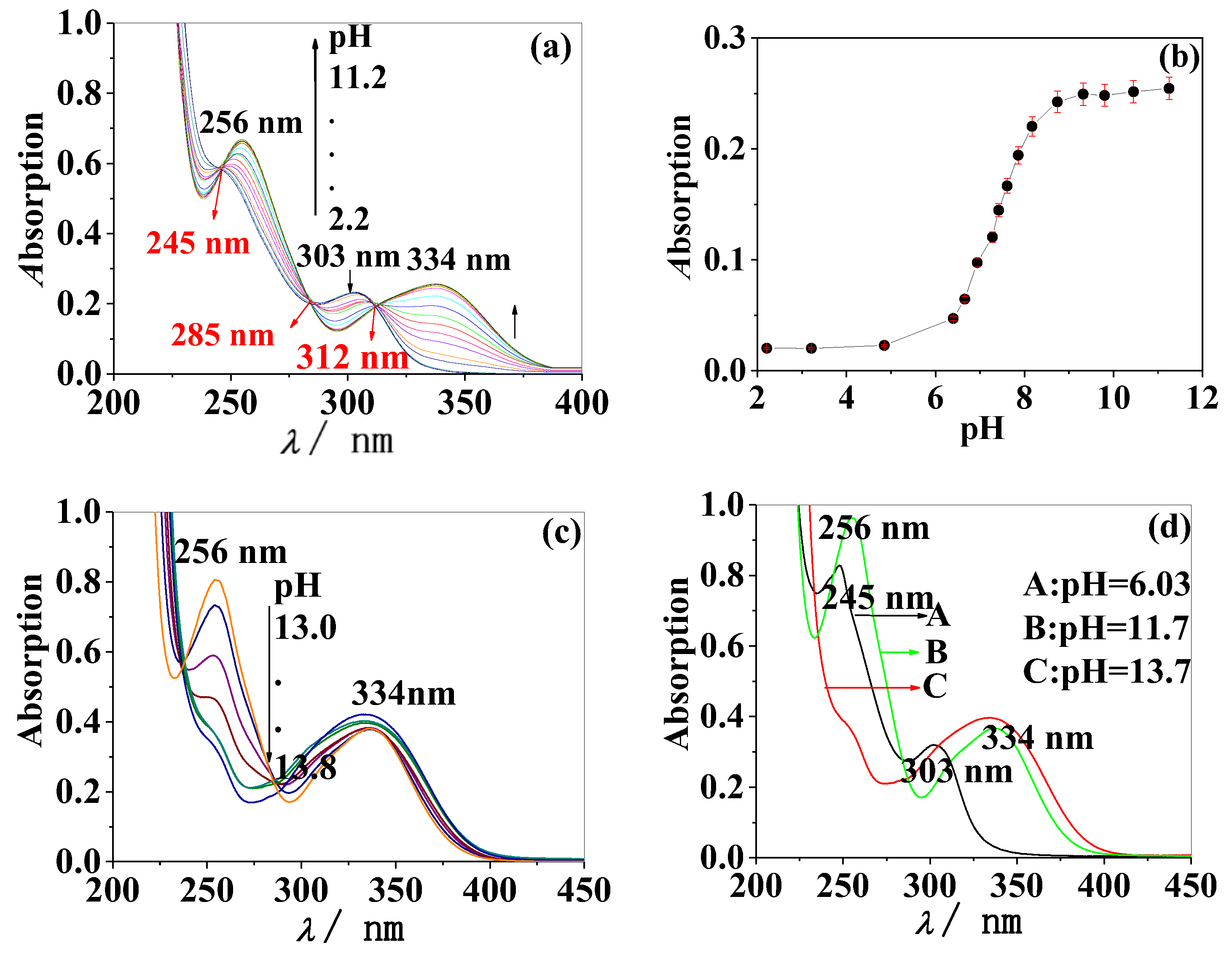




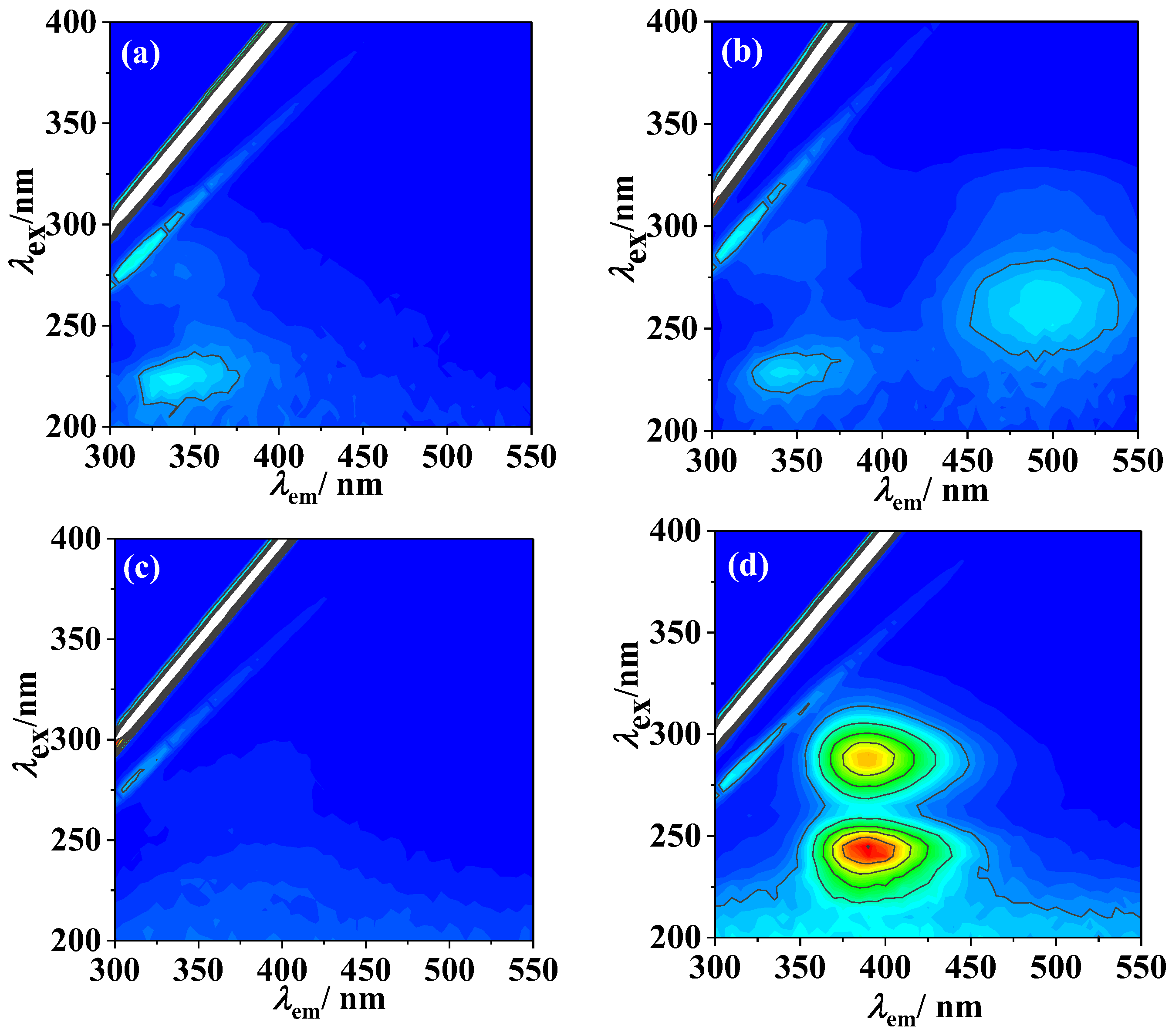
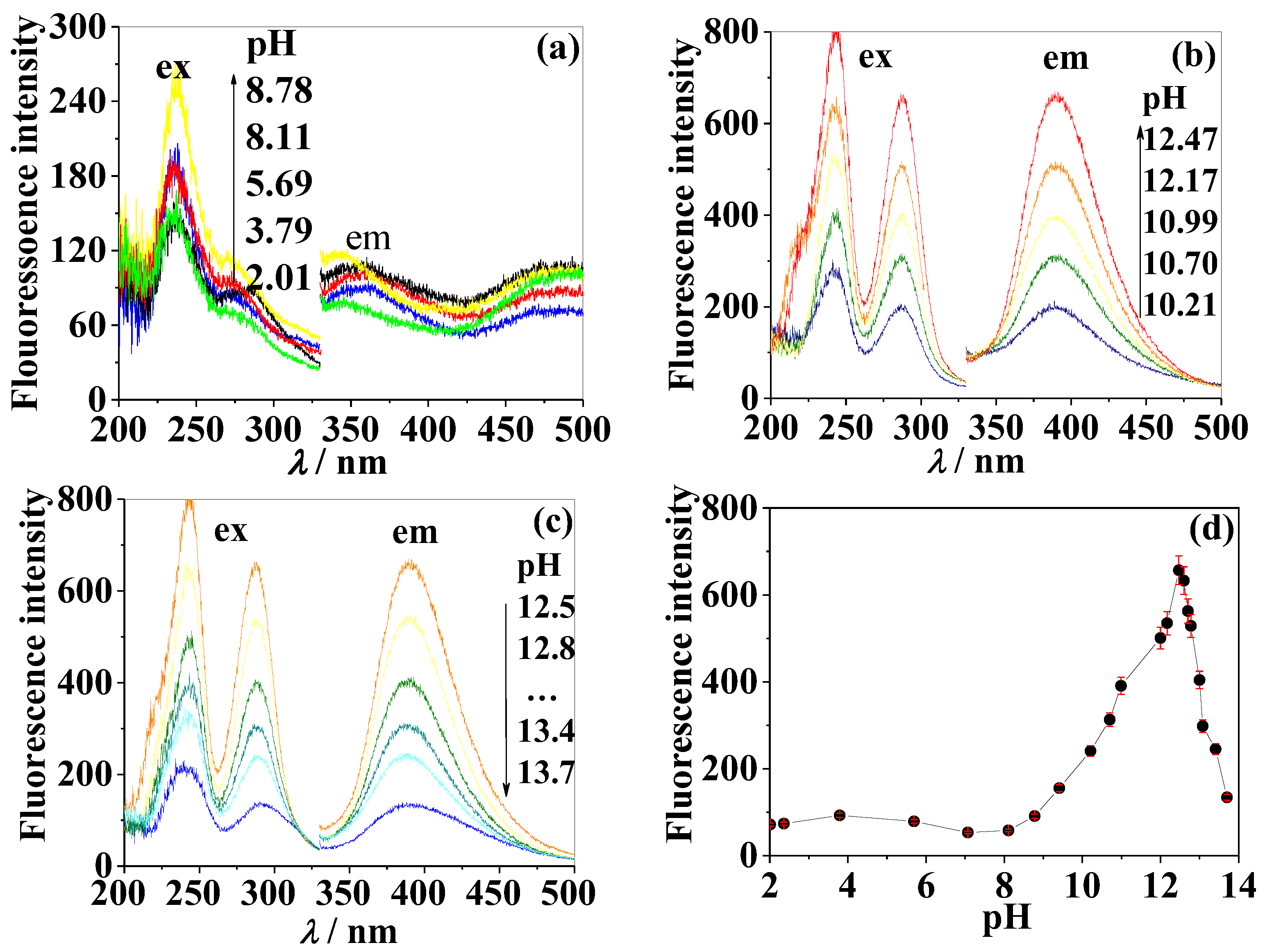

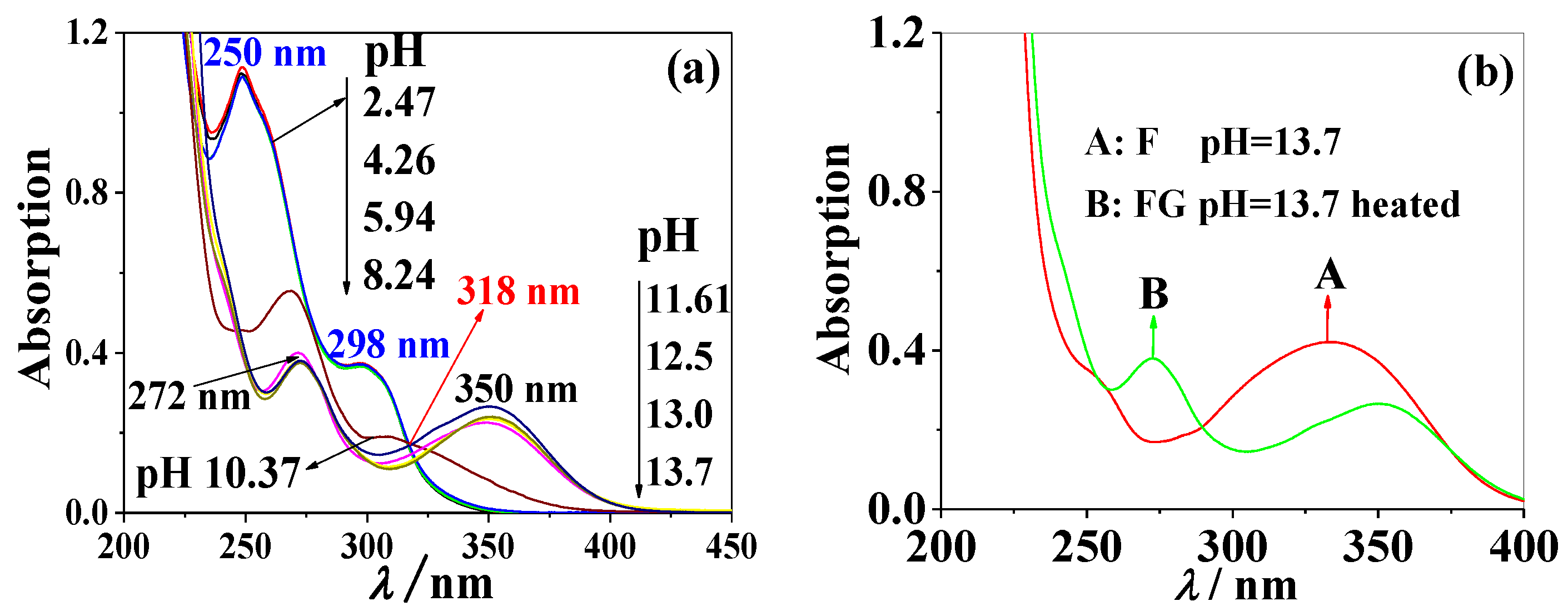
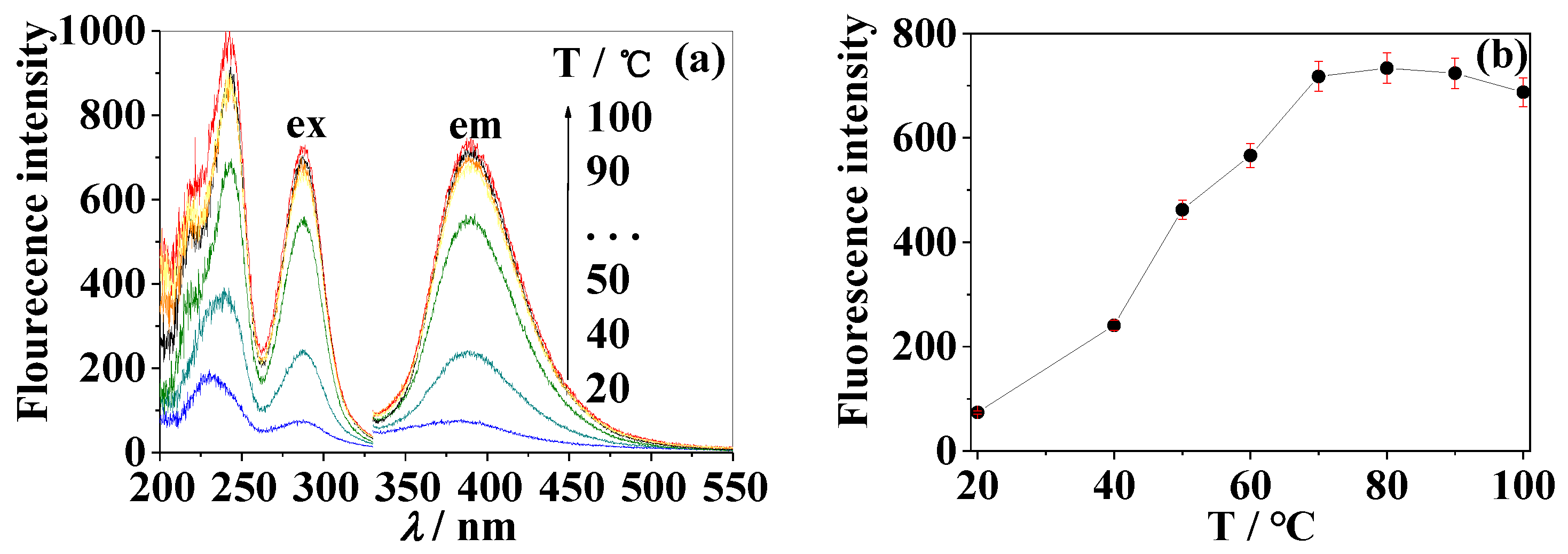
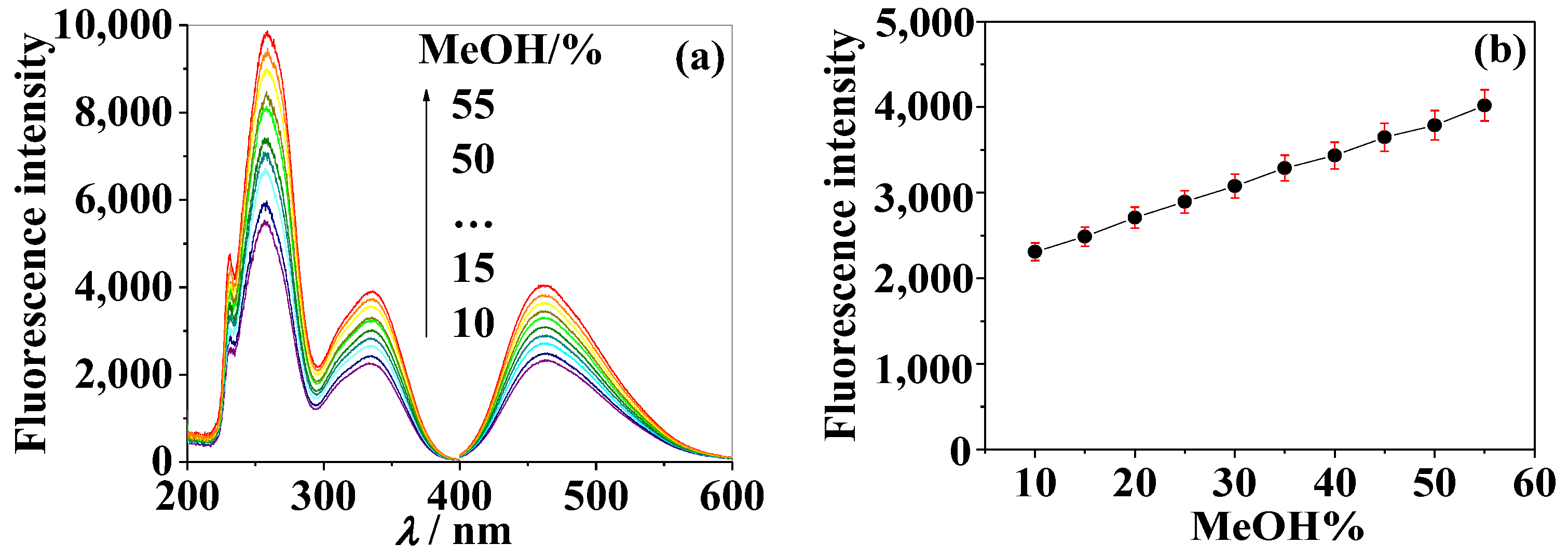
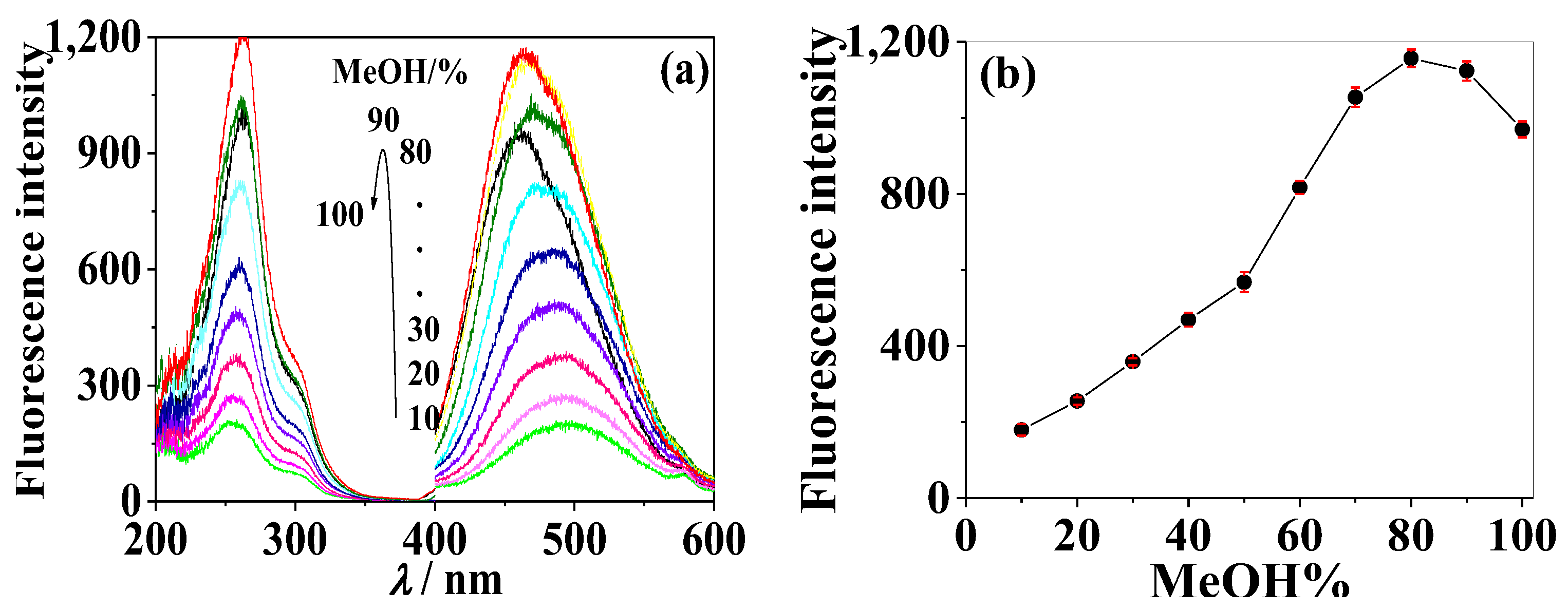
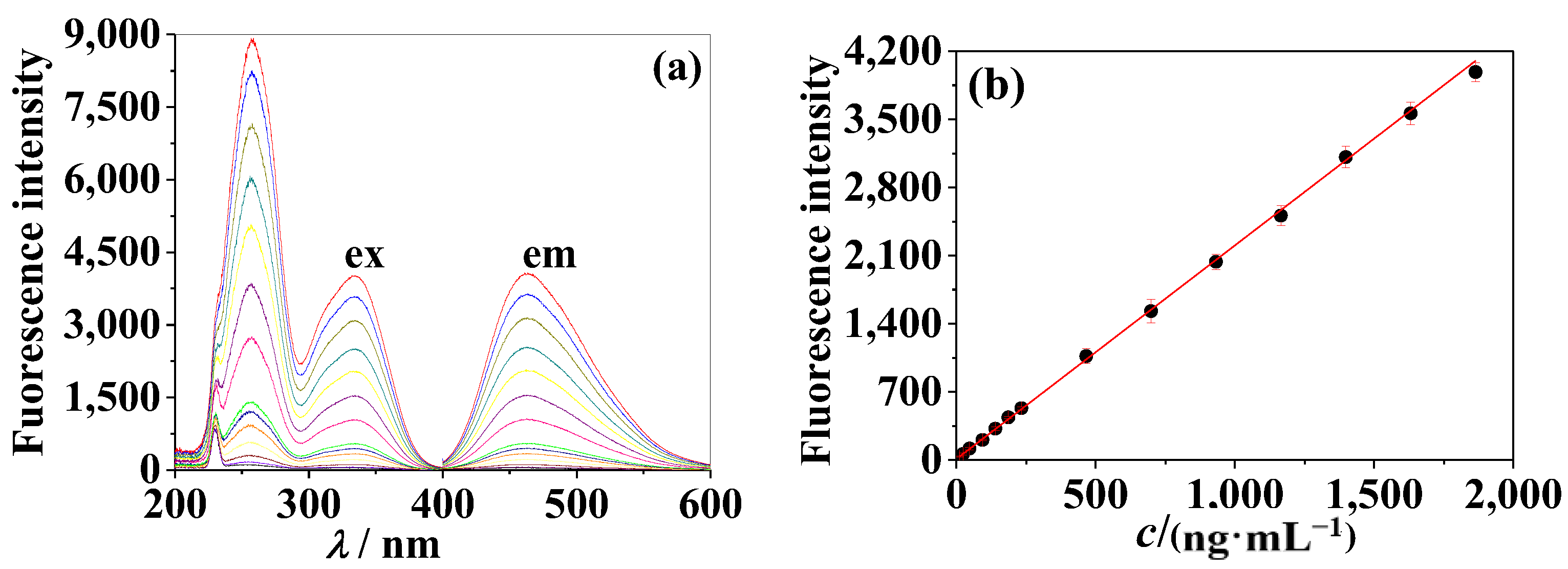

| Compounds | Linear Ranges/(ng·mL−1) | LOD/(ng·mL−1) | Methods | Ref. |
|---|---|---|---|---|
| formononetin | 190–12,060 | 10 | UPLC-DAD-MS | [17] |
| 200–71,000 | 100 | UHPLC-UV-MS | [18] | |
| 140 0–280,000 | 500 | HPLC–DAD-ESI-MS | [19] | |
| 11.7–1860 | 2.6 | Fluorescence | This work | |
| ononin | 190–12,020 | 10 | UPLC-DAD-MS | [17] |
| 200–86,000 | 100 | UHPLC-UV-MS | [18] | |
| 900–180,000 | 200 | HPLC–DAD-ESI-MS | [19] | |
| 14.6–2920 | 9.3 | Fluorescence | This work |
Disclaimer/Publisher’s Note: The statements, opinions and data contained in all publications are solely those of the individual author(s) and contributor(s) and not of MDPI and/or the editor(s). MDPI and/or the editor(s) disclaim responsibility for any injury to people or property resulting from any ideas, methods, instructions or products referred to in the content. |
© 2023 by the authors. Licensee MDPI, Basel, Switzerland. This article is an open access article distributed under the terms and conditions of the Creative Commons Attribution (CC BY) license (https://creativecommons.org/licenses/by/4.0/).
Share and Cite
Cao, J.; Li, T.; Liu, T.; Zheng, Y.; Liu, J.; Yang, Q.; Li, X.; Lu, W.; Wei, Y.; Li, W. A Study of the Mechanisms and Characteristics of Fluorescence Enhancement for the Detection of Formononetin and Ononin. Molecules 2023, 28, 1543. https://doi.org/10.3390/molecules28041543
Cao J, Li T, Liu T, Zheng Y, Liu J, Yang Q, Li X, Lu W, Wei Y, Li W. A Study of the Mechanisms and Characteristics of Fluorescence Enhancement for the Detection of Formononetin and Ononin. Molecules. 2023; 28(4):1543. https://doi.org/10.3390/molecules28041543
Chicago/Turabian StyleCao, Jinjin, Tingting Li, Ting Liu, Yanhui Zheng, Jiamiao Liu, Qifan Yang, Xuguang Li, Wenbo Lu, Yongju Wei, and Wenhong Li. 2023. "A Study of the Mechanisms and Characteristics of Fluorescence Enhancement for the Detection of Formononetin and Ononin" Molecules 28, no. 4: 1543. https://doi.org/10.3390/molecules28041543
APA StyleCao, J., Li, T., Liu, T., Zheng, Y., Liu, J., Yang, Q., Li, X., Lu, W., Wei, Y., & Li, W. (2023). A Study of the Mechanisms and Characteristics of Fluorescence Enhancement for the Detection of Formononetin and Ononin. Molecules, 28(4), 1543. https://doi.org/10.3390/molecules28041543








